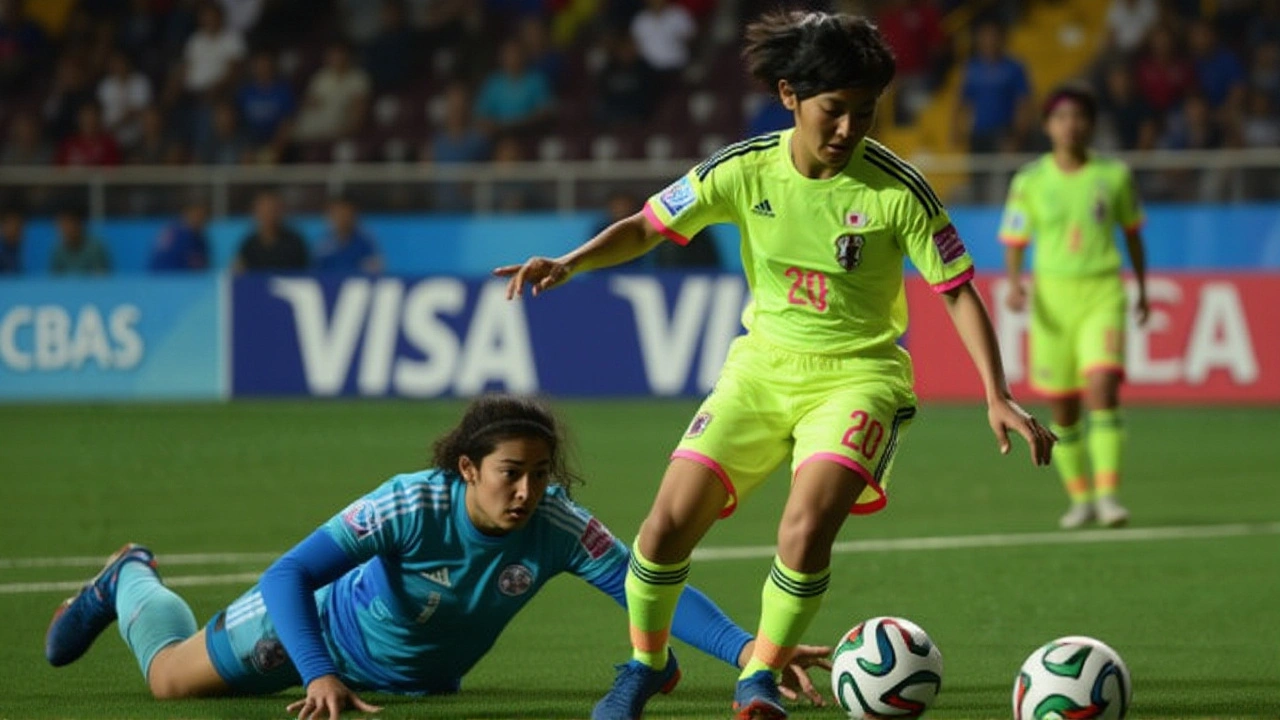
Japan's U‑17 Women Rush to Quarterfinals with 10‑0 Win over Paraguay
Japan's U‑17 women thrashed Paraguay 10‑0, clinching a quarter‑final spot early at the 2014 World Cup in Costa Rica, with captain Hina Sugita netting a hat‑trick.
When talking about U‑17 Women's World Cup, the global tournament that pits the best under‑17 women’s national teams against each other every two years. Also known as the FIFA U‑17 Women’s World Cup, it serves as a proving ground for future stars and a showcase for emerging football cultures.
The competition is organized by FIFA, the governing body that sets the rules, qualification pathways and host‑nation selection for the tournament. FIFA’s involvement guarantees a standardized format, media coverage and a pipeline that feeds senior national squads. Because U‑17 Women’s World Cup draws attention to young talent, clubs and scouts keep a close eye on every match.
Women’s football, the broader sport that includes everything from grassroots leagues to professional clubs gains a huge boost every time the U‑17 tournament kicks off. Youth development programmes across Africa, Asia and the Americas ramp up training camps, aiming to meet FIFA’s qualification criteria and to give players a taste of international pressure. In South Africa, for example, recent successes in senior women’s teams have sparked more funding for under‑15 and under‑17 academies.
The tournament’s structure also shapes talent scouting. National federations run regional qualifiers, which act as mini‑tournaments where scouts evaluate speed, technical skill and tactical awareness. A player who shines in the qualifying round often earns a spot on a professional club’s youth roster, accelerating her path to senior football. This scouting network links directly to the development pipelines that feed the senior World Cup squads.
Host nations get a unique opportunity to showcase infrastructure and local passion. From stadium upgrades to community outreach, the host’s investment leaves a lasting legacy—new pitches, better coaching courses, and increased fan engagement. The 2024 edition in the Philippines, for instance, spurred a surge in girls’ enrollment in school football programs, illustrating how the event can ignite long‑term growth.
Beyond the on‑field action, the U‑17 Women’s World Cup influences media narratives. Coverage highlights stories of perseverance, cultural exchange and role models for the next generation. Articles about a refugee‑born midfielder signing with a North American club, or a late comeback that mirrors historic qualifiers, show how the tournament’s themes echo across the wider football world.
All of this means the U‑17 Women’s World Cup isn’t just a youth event—it’s a catalyst for change, a scouting hub, and a cultural touchstone. Below you’ll find a curated mix of match recaps, player spotlights, development updates and behind‑the‑scenes looks that together paint a vivid picture of where women’s football is headed. Dive in and see how today’s youngsters are shaping tomorrow’s game.

Japan's U‑17 women thrashed Paraguay 10‑0, clinching a quarter‑final spot early at the 2014 World Cup in Costa Rica, with captain Hina Sugita netting a hat‑trick.